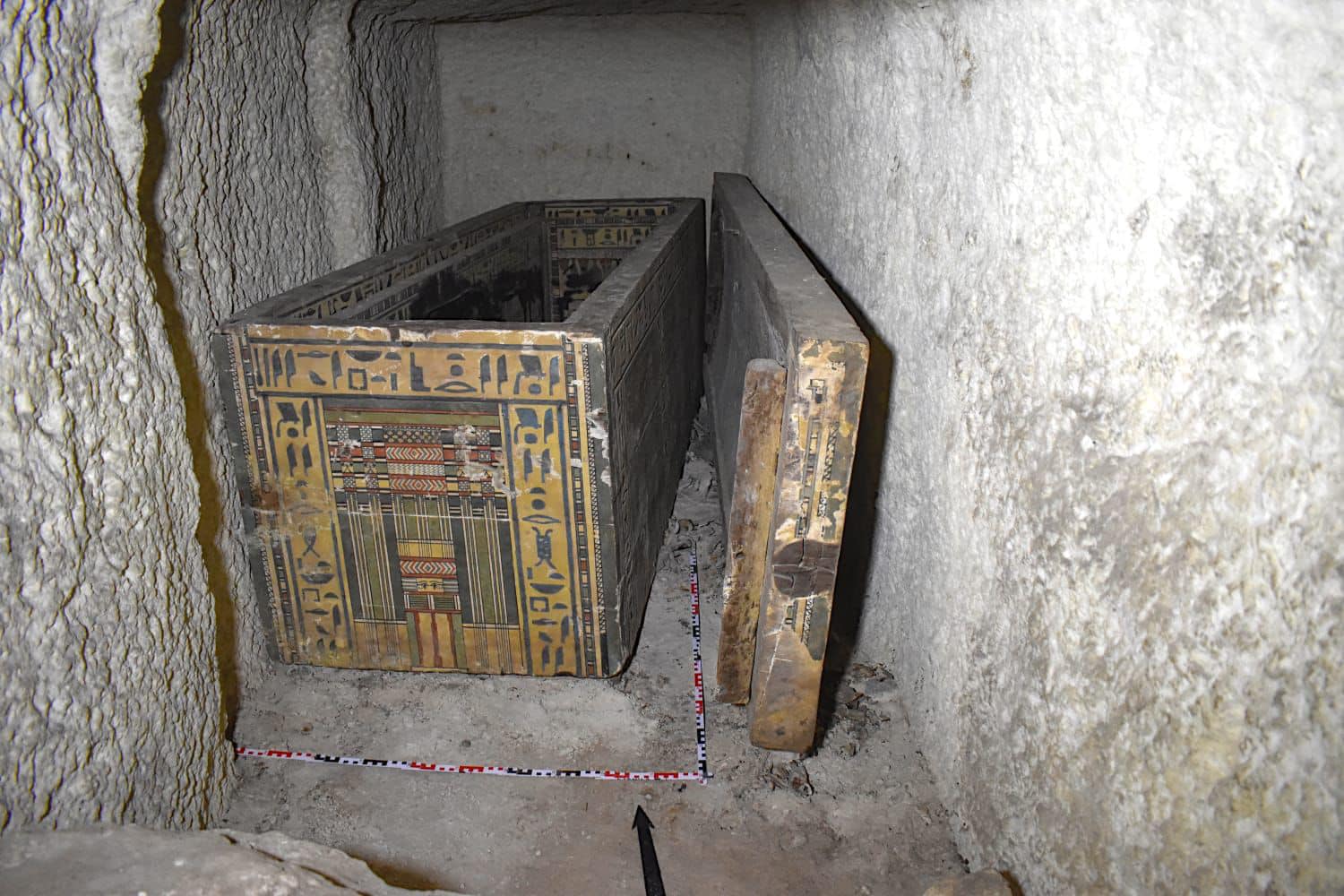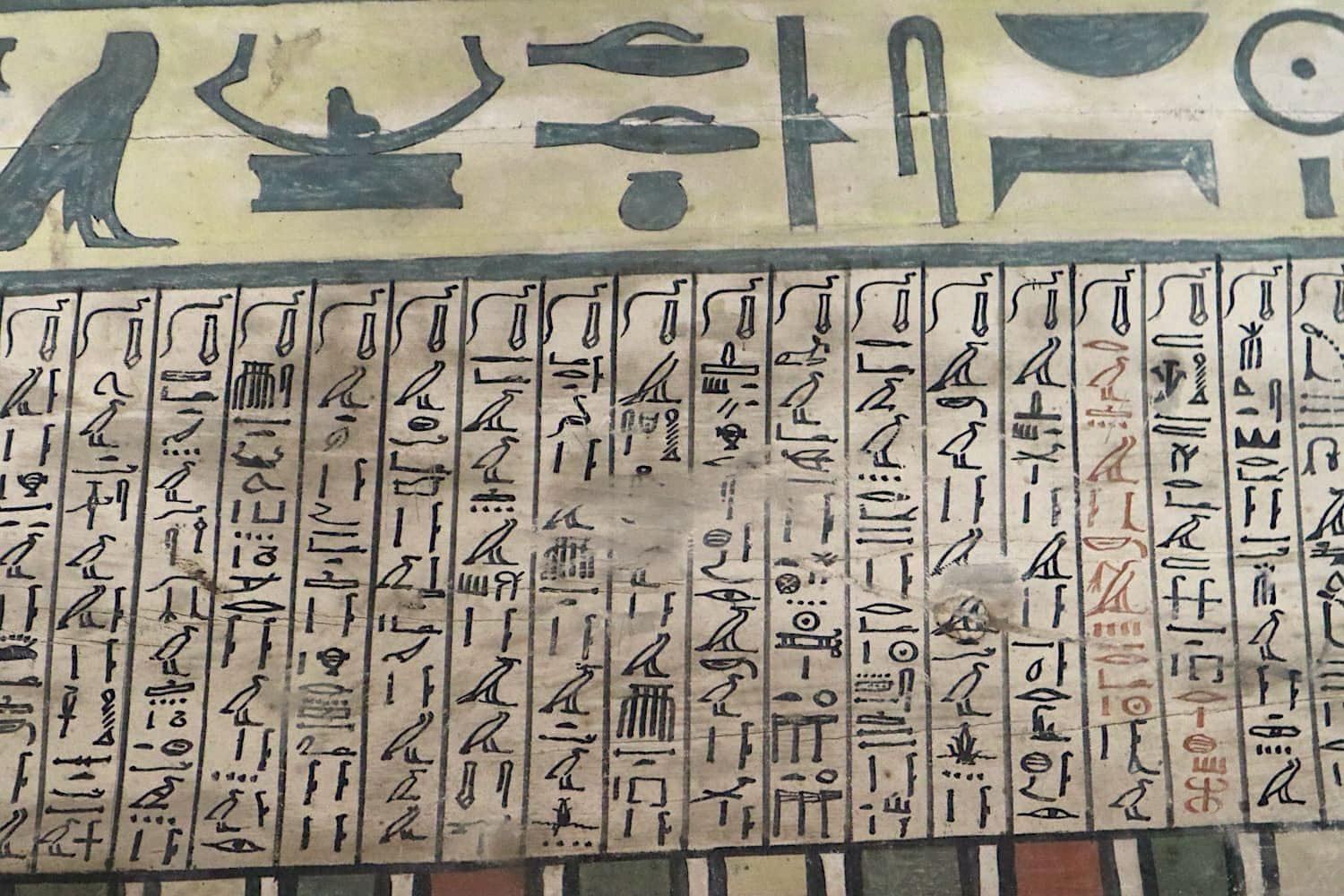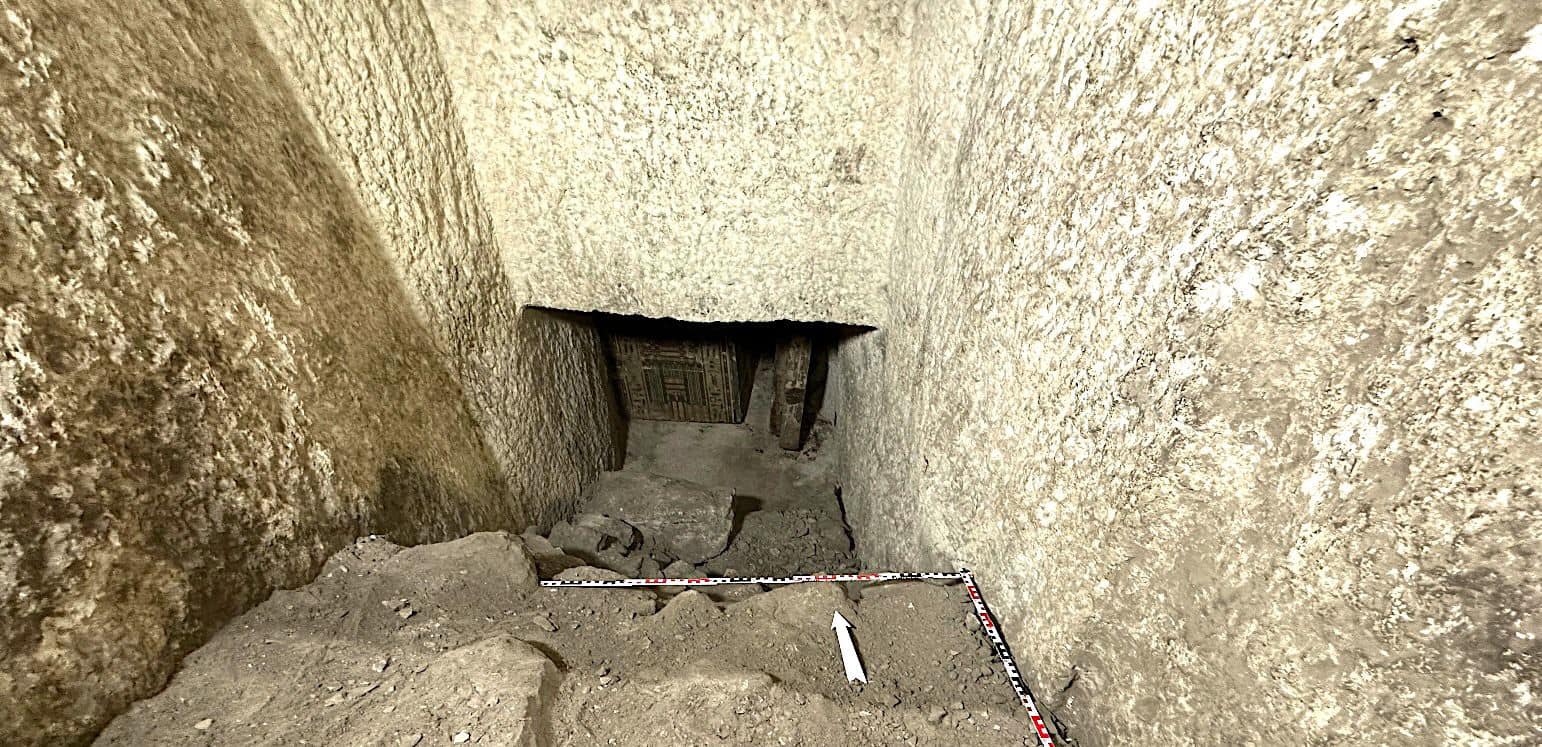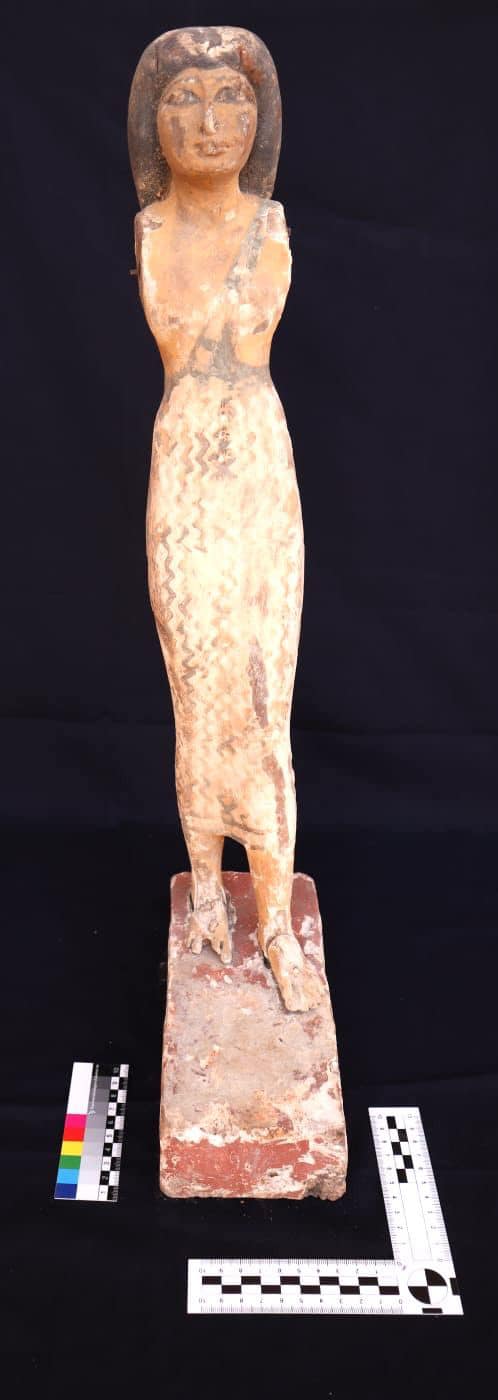Important archaeological discovery in Egypt, where an Egyptian-German archaeological mission led by Sohag University and the Free University of Berlin has discovered, inside the tomb of Governor Djefai-Hapi in the Assiut region (which Djefai-Hapi administered during the reign of Pharaoh Sesostri I in the 20th century B.C.), the burial chamber of the governor’s daughter, Idi. She was his only daughter. The discovery came during the cleaning work the mission was doing inside her father’s tomb, the largest in Egypt among those not belonging to rulers, a circumstance that indicates the relevance of Djefai Hapi, one of the most important rulers of the territories of ancient Egypt.
The great importance of the discovery stems mainly from the fact that it is very rare to find two intact sarcophagi from the Middle Kingdom era (c. 2055-1790 BCE): and indeed here, inside the burial chamber, two were found, one inside the other, bearing hieroglyphic inscriptions both inside and outside, telling of the journey to the afterlife. The small sarcophagus is 2.30 meters long while the large one is 2.62 meters long. “They are among the most incredible sarcophagi ever found,” said Mohamed Ismail Khaled, secretary general of the Supreme Council of Archaeology Archaeology. The Idi burial chamber was found about 15 meters deep on the north side. Two figurines were also found at the same site, which may depict the governor’s own daughter.
Preliminary studies conducted by the mission on the burial chamber revealed that some grave robbers in ancient times had reached this chamber: the girl’s mummy had in fact been removed, and the canopic jars had been destroyed. Preliminary examinations of the woman’s bone remains found in the chamber indicated that she had died at a young age, before the age of 40, and had a congenital foot defect. Work on cleaning the tomb and scientific studies of the bones will continue to reveal more information about this ruler and his daughter, and the historical era in which they lived. Indeed, the discovery is helpful in shedding light on this period of Egypt’s history, as well as the social position of women in the Middle Kingdom era.
The Egyptian Minister of Tourism and Antiquities, Sharif Fathi, showed his appreciation for the efforts of the Egyptian Archaeological Missions in revealing more secrets of ancient Egyptian history, stressing that the Ministry will provide full support to these missions, contributing to the completion of their work in the best way.






 |
| Rare discovery in Egypt: here is the tomb of the governor's daughter |
Warning: the translation into English of the original Italian article was created using automatic tools. We undertake to review all articles, but we do not guarantee the total absence of inaccuracies in the translation due to the program. You can find the original by clicking on the ITA button. If you find any mistake,please contact us.